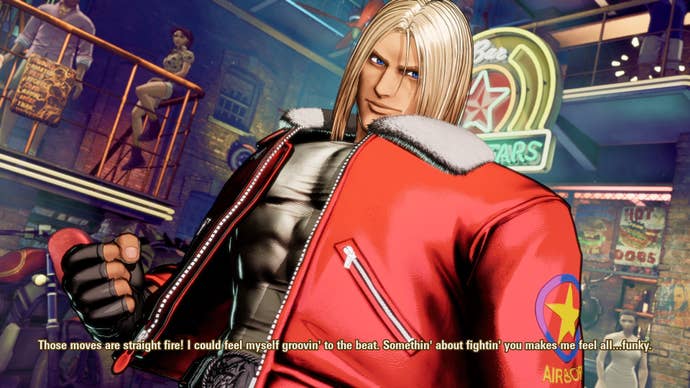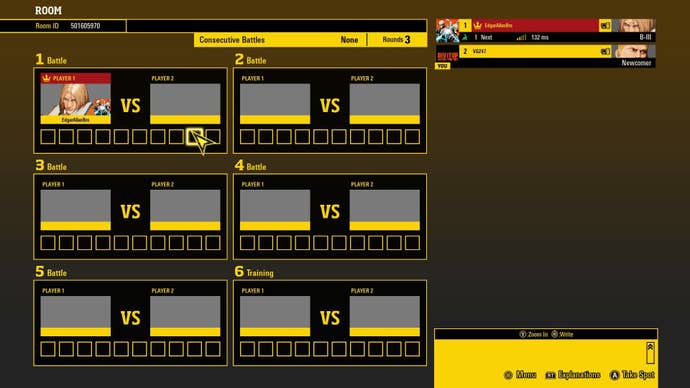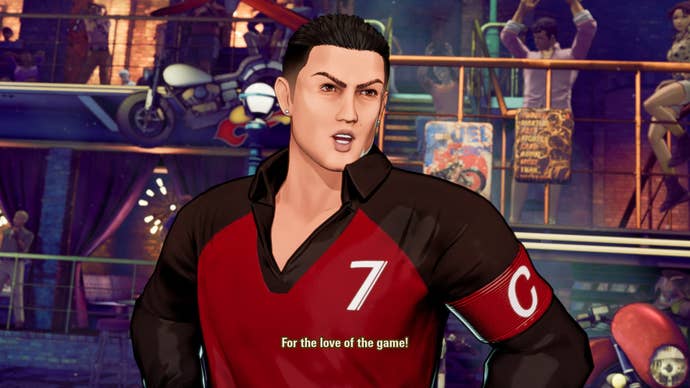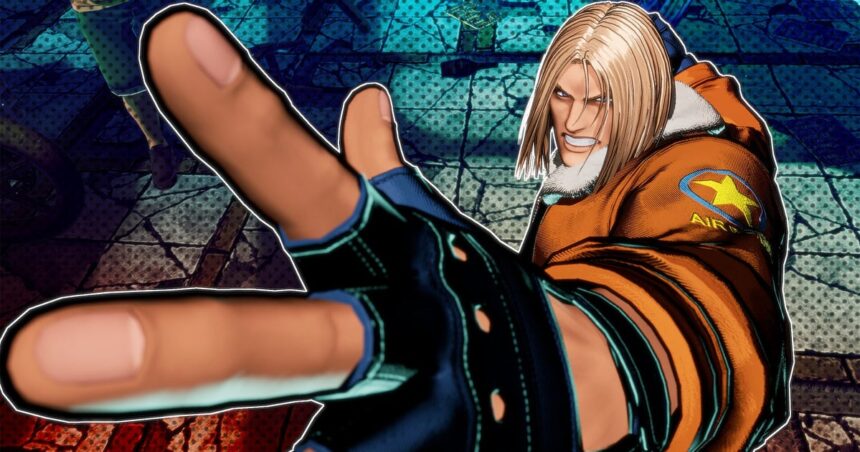A masterful sequel to one of the genre’s most beloved games, but it carries an ink stain that’s hard to ignore.
Over 20 years ago, SNK blew the world away with Garou: Mark of the Wolves. Since then, Fatal Fury has become a relic of the past, loved only by those with wrinkles on their face and a place for gaming classics in their hearts. That flickering ember remains dormant no longer with Fatal Fury: City of the Wolves, a grand resurgence with more money thrown at it than the next unsustainable AI start-up. But does City of the Wolves have what it takes to carve a home for itself in a market dominated by Street Fighter, Tekken, and more? Judged on what I’ve played, I’d say it’s got a damn good shot at doing so.
A sequel 26 years in the making, City of the Wolves comes from SNK, a company as familiar with stellar fighting game development as it is with throwing blonde blokes off towers. It’s a 2v2 fighter that revisits many of the company’s most iconic and adored characters, aging them up and revitalising the cast for a new audience. It’s a big event for old school fighting game fans, with all the joy and fanfare of a childhood friend kicking off an old mates group chat. It is, as such, without a doubt one of the most exciting fighting game releases this year.
It’s making an explosive landing onto the modern gaming landscape, too. You get all you’d expect from a standard fighting game package: an arcade mode, online lobbies, combo trials, a detailed tutorial. On top of that you get a dedicated story mode called Episodes of South Town, which takes you through a fresh narrative for all the characters, a heavy haul of unlockable art, and even an extensive jukebox. It’s a game overflowing with content, the real deal in terms of value for money as far as fighting games go.
Episodes of South Town is a nice place to start, as it’ll be the first stop for many new players. Discussions around what makes a solid single-player mode in fighting games is a long-lasting and tiring discourse. Frankly, while this may not have the cinematic appeal of a Mortal Kombat release, it’s a great way of telling a new story in the world of Fatal Fury while also teaching newbies the basics. Packed with quality art and battle modifiers, you proceed through the city, taking on fights and learning more about the character you select. It’s also a wonderful way of slowly teaching players how the inner workings of City of the Wolves function. Proceeding through this mode, you unlock more universal mechanics that slowly ease you into what is a fairly complex fighter.
| Image credit: SNK
Your reward for completing this mode can be found across various collection tabs packed with art, little lore tidbits, and music. In fact, there’s a whole catalogue filled with decades of Fatal Fury soundtracks, bringing you right back to the sounds of years past. In terms of extra goodies you unlock, it feels like a treasure trove for fans of the series. You can even create custom colour schemes for your favourite character. Now, this isn’t a full-on costume and apparel system like you see in games like Tekken 8 or Street Fighter 6, but it’s still a nice touch that adds that little bit of personal expression, and it makes all the difference.
This all may sound like small, largely nonconsensual fluff, but it’s these sorts of additions that help make City of the Wolves feel like a faithful sequel that understands how big a deal this game is for folks in their late 30s and beyond. A group that is often found gorging themselves on nostalgia.
SNK has historically struggled with the transition from brilliant 2D sprite work to 3D. With the release of King of Fighters 15 it felt as though it really nailed it, giving fans vibrant, distinct visuals for a punchy, bombastic game. But it turns out with City of the Wolves, SNK could do better. It’s a visual feast that your eyes can’t help but scan for every detail. Stages are wonderfully animated, packed with little moving details and spectators cheering on your fight. We even get returning favourites from Mark of the Wolves remade with love that harken back to the good ol’ days. Almost every character looks like a true torchbearer for the old 2D art work SNK built its legacy on.

What doesn’t look good, however, are the menus. It’s clear the team has gone for a minimalist approach, keeping things simple with a black and yellow scheme, separating key elements with plain boxes. It just… looks cheap. Rushed and not particularly engaging. Add on top of that how convoluted navigating these menus can be and it really rubbed me the wrong way. The online lobby, for example, looks as though it was pushed out by some office worker with some spare time to mess around with Google Sheets, not by a team working on a multi-million dollar project.
All of these modes, all of these little treats in City of the Wolves, would matter little if the game itself was shallow – if it felt bad to play, if you didn’t feel as though your first few matches were a step into an ocean of skill expression. I’m happy to say that SNK, which has long proved its ability to create exceptional fighting games, has really outdone itself here. City of the Wolves is a wonderfully built fighter. Especially during an era where playing aggressive feels like the overall direction its competitors are heading in.
The secret of the game’s appeal from a gameplay perspective is that it’s a meticulously crafted defensive fighter. Blocking at the perfect time grants a Perfect Defend, allowing for a counter attack and healing a little bit of health. That’s fairly standard, but you’ve got high and low dodges and REV Guarding, both of which add ways of mitigating incoming damage. Guard cancels are especially exciting – if you block just at the right time, you can instantly throw out a special move that can totally turn around a brawl in your favour. Then there are REV blows, armoured attacks you can only use when at specific portions of your life bar, that offer incredibly potent reversal opportunities. Adding a level of strategy, you can choose where you want this portion to be, a decision that could make all the difference in particular match-ups. What other fighting game offers this kind of defensive complexity? Well, there isn’t one. Not even close.
If you’re reading this and thinking City of the Wolves sounds like a challenging game, you’re right. You genuinely do need some aptitude when it comes to directional inputs, and it’s harder to link together combos here than it is in other modern fighters. That’s just what the doctor ordered, I say. But as happy as I am with this state of affairs I should note that a portion of players will try the game out and bounce right off it. Such is the perpetual curse of fighting games. There is a smart control option, which provides auto combos and a dedicated special move button, but more than other comparable control schemes in contemporary fighters it feels like a jumping off point.

| Image credit: SNK
You see, with smart controls your options in a match are severely limited. They don’t feel especially competitive at an even intermediate level – fine for trying out new characters, seeing what their deal is, and ultimately making an informed decision on who you want to spend your time and energy learning properly by switching to the default, arcade control scheme. This, for me, works. It’s just powerful enough to merit using in super casual matches against friends, without giving you the tools to overwhelm other players online.
The final must-have for any modern fighting game is good netcode – long gone are the days of bad connections between yourself and your mate an hour down the road. Here again, SNK nails it. Matches I played online with people in the UK felt smooth as silk, and I could even get matches against other players in the USA without much issue. With City of the Wolves, the only real hurdle between you and online play with friends is the awful lobby system. Once you navigate that, it’s all gravy.
If I were to end the review here, City of the Wolves would get an overwhelming recommendation. It would be a true champion of a new era of SNK, made with real passion and oozing quality from almost every aspect of the game. But, there’s a stain on City of the Wolves that’s impossible to ignore, and which has prompted heated criticism among fans in the lead-up to release. That blemish comes from SNK’s owners, who have morphed what is otherwise a near perfect package of a fighter to an endeavor in sportswashing.
This blemish comes primarily in the form of famous footballer Christiano Ronaldo and DJ Salvatore Ganacci. One could argue that these were included in order to bring more players into Fatal Fury, which is certainly an understandable thing to do. Fighting games remain, of course, largely a niche genre, while Ronaldo is one of the best-known football players in the world. However their inclusion as playable characters here and their ties to the Saudi Arabian government’s other sportswashing ventures mean that what should have been a game solely celebrating the Fatal Fury series also feels like an advertisement for a country ranked fourth globally in the use of slavery, which bombs innocents in Yemen and displaces native villages so the country can build eyewateringly expensive buildings that are never finished.

| Image credit: SNK
The majority owners of SNK, the MiSK Foundation, have Saudi Arabian Crown Prince Mohammed bin Salman as its chairman, and there’s been criticism of the perceived influence on the game’s roster with both figures’ inclusion. Ronaldo’s real-world signing by Saudi Arabian football club Al-Nassr has been called out by Amnesty International as part of a wider pattern of sportswashing in the country. Ganacci, meanwhile, has received criticism for playing Saudi-backed music festivals and reportedly enjoying a close relationship with the Saudi royal family. Ultimately, what this means is that City of the Wolves, with all its absurd marketing spend, joins the ranks of Liv Golf, the Esports World Cup, and Premier League football team Newcastle United as a billboard for the country, meant to distract you with all its glitz and glamour from its real problems. Maybe you’ll watch the Esports World Cup and see the game played at its highest level, you’ll hear a Steve Aoki track in-game and travel there on holiday, or maybe you open a business there.
There will be many of you reading this who go, okay look, who gives a shit? I want to play my video games. I do absolutely understand that perspective. SNK has, to give it well-deserved credit, created a brilliantly deep and compelling fighting game here. Even if you can ignore the ethical questions City of the Wolves poses, the guest fighters still irritate, though. They’re a touch overly referential with their move list, clearly opting towards recreating popular stances and poses than sensible attacks that fit within the world of Fatal Fury. It’s a bit weird that Ganacci and Ronaldo are here over other classic Fatal Fury characters, right? Especially when there are decades of familiar faces people love who absolutely deserve a spot in the game.
It’s a call each player will have to make for themselves. If you are willing to swallow the ethical dilemma, there’s a solid gold fighting game here. But for me personally, it’s too pressing a connection to ignore -a real ink stain on an otherwise masterful sequel to one of the genre’s most beloved games.
A copy of Fatal Fury: City of the Wolves was provided for review by SNK.





